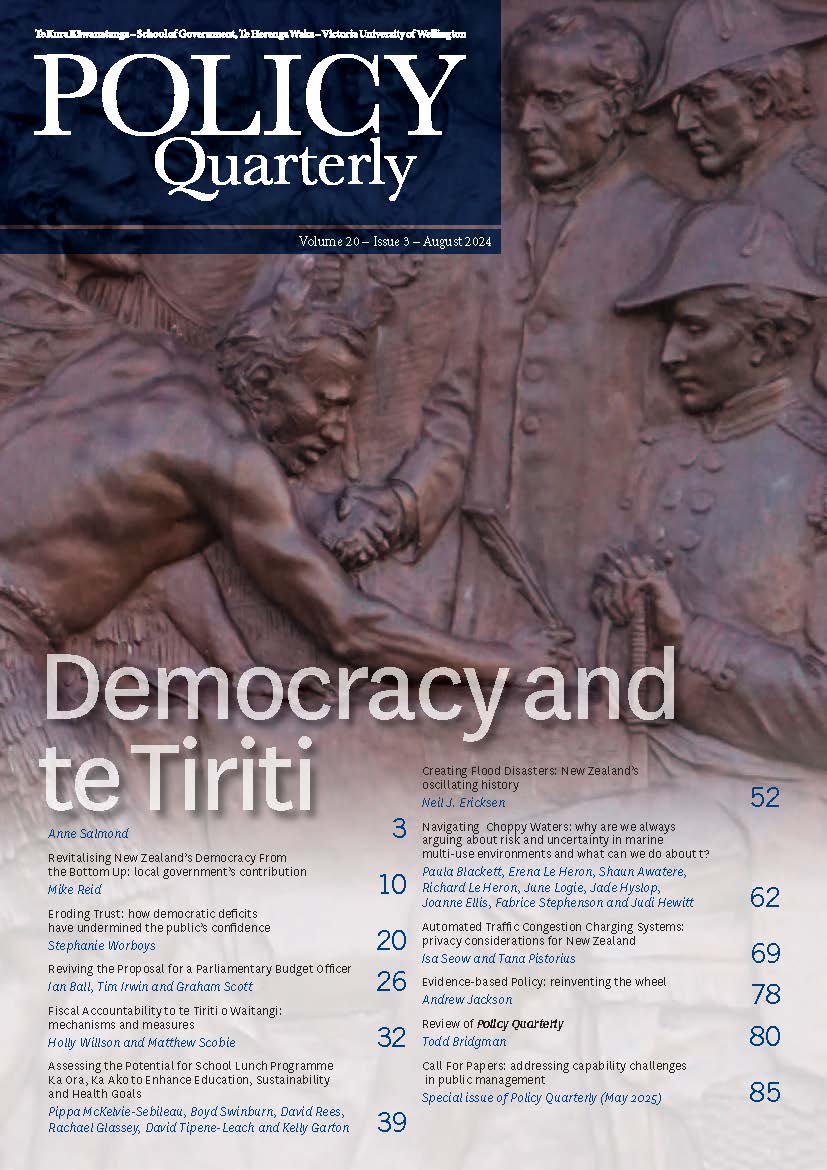Creating Flood Disasters
New Zealand’s oscillating history
DOI:
https://doi.org/10.26686/pq.v20i3.9563Keywords:
Flood hazard, Disaster potential, Coercive–prescriptive, Cooperative–devolved, Policies and practicesAbstract
Using a three-part framework to evaluate choices for adjusting to floods in New Zealand, factors influencing floodplain policies and practices since 1950 are identified. Each change came after severe regional flooding. Early emphasis was on enlarging channels and raising stopbanks, and on post-disaster relief. These responses enhanced urban floodplain development, and disasters when systems failed. Periodically, attempts to improve land use planning and building management, including requirements for flood hazard maps, met stiff resistance from developers, property owners and growth-oriented local politicians, resulting in changed legislation. Policy and practice thereby oscillated several times in response to prescriptive/coercive and devolved/co-operative mandates. Underpinning all has been poor understanding of flood frequency statements on the part of at-risk people.
Downloads
Downloads
Published
Issue
Section
License
Permission: In the interest of promoting debate and wider dissemination, the IGPS encourages use of all or part of the articles appearing in PQ, where there is no element of commercial gain. Appropriate acknowledgement of both author and source should be made in all cases. Please direct requests for permission to reprint articles from this publication to Policy-Quarterly@vuw.ac.nz.



